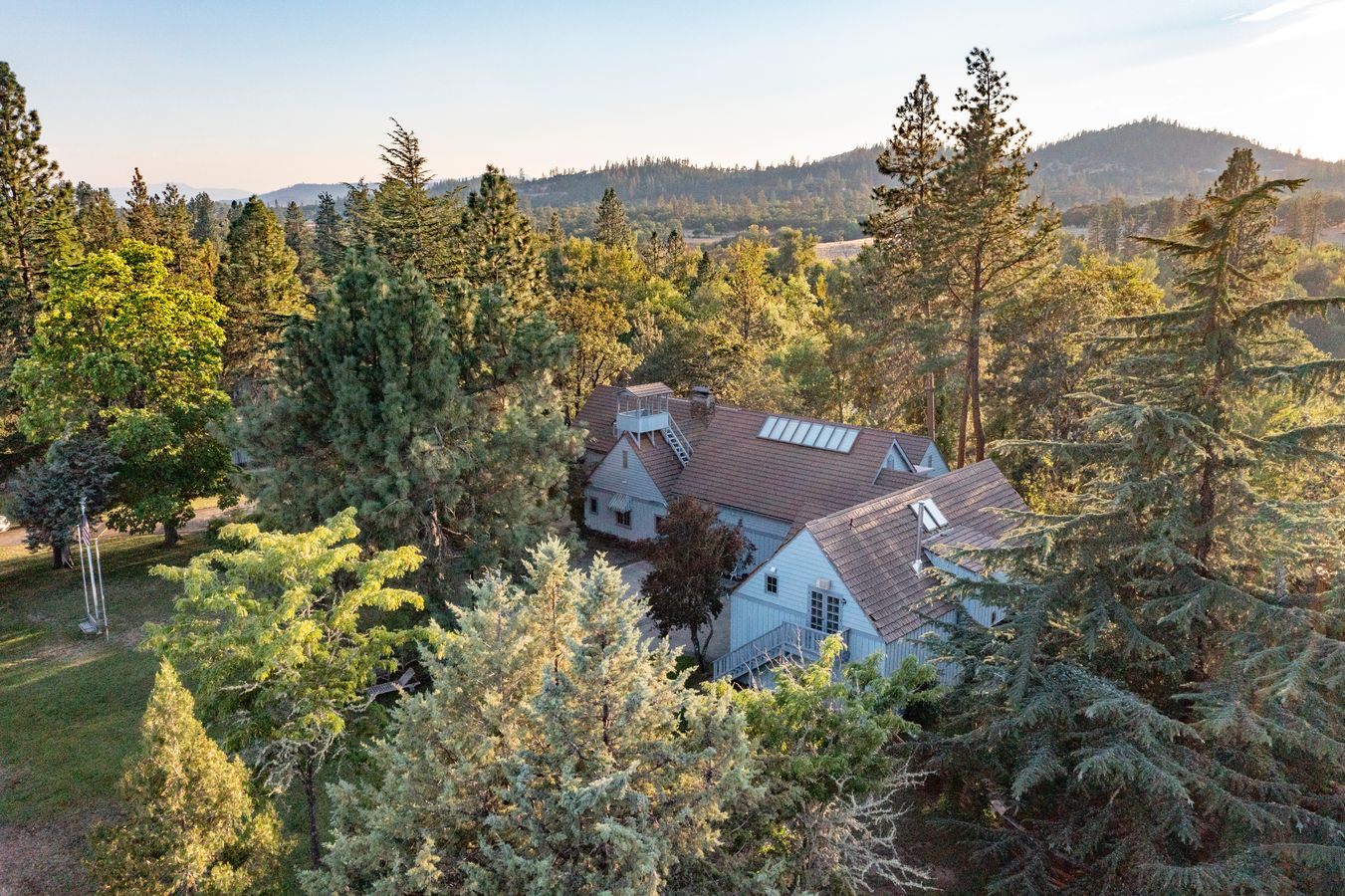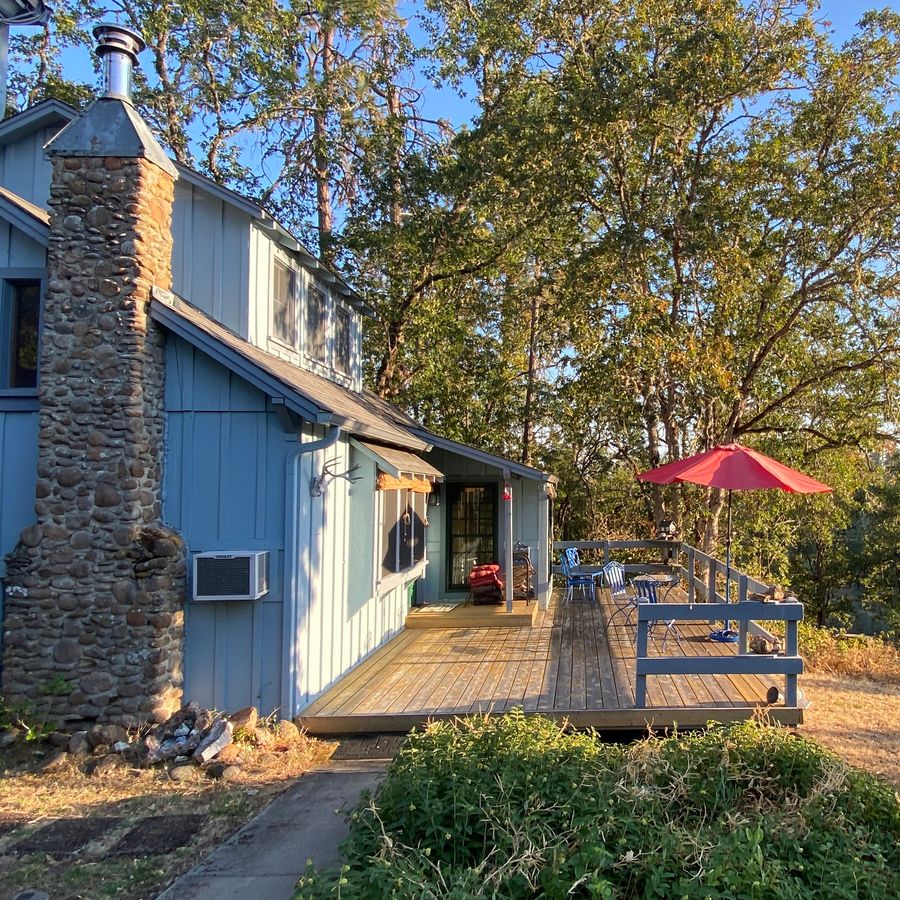Patrick Duffy of ‘Dallas’ Fame Lists Oregon Ranch for $14 Million
The 390-acre property has 2 miles of frontage on the Rogue River
Former “Dallas” star Patrick Duffy is putting his roughly 390-acre Oregon ranch on the market for $14 million.
The property sits along the Rogue River outside the city of Medford in southern Oregon, according to Alan DeVries of Sotheby’s International Realty, who has the listing with colleague Matt Cook.
Mr. Duffy said he bought the first roughly 130 acres of the property in 1990 for roughly $1.5 million with his late wife, Carlyn Rosser. The couple spent roughly two decades and about $3 million buying surrounding properties when they went up for sale, said the actor, who has made the ranch his primary home since the early 2000s.

“My family always felt like we were stewards as opposed to owners,” said Mr. Duffy, 73. “We kept the boundaries sacred.”
Mr. Duffy said he first saw the property while fishing with a friend. The property contained a few structures, including what is now the main house, but was mostly wilderness, he said.
“It was pristine,” he said. “There was no paved road. There were some trails through the woods and about a mile—a little less than a mile—of river frontage.”
Mr. Duffy said he flew Ms. Rosser out to see the ranch, and they bought it. The main house has four bedrooms, and connects to a gallery where the couple displayed their art collection. They converted a caretaker’s cottage into a one-bedroom guesthouse with a loft. They also added a building that contains a hot tub overlooking the river, a structure for an indoor lap pool, and a wine cellar built into the side of a mountain, all within walking distance of each other.

As they purchased adjacent properties over the years, they acquired eight more houses and several pastures that are rented out to local ranchers. One of the homes was demolished, six are rented to tenants, and one is used as the ranch manager’s house, according to Mr. Duffy.
“We became a working ranch but not with our own animals,” he said. “It added the most beautiful, bucolic sense of the place.”
A homestead that dates back over 100 years still sits at the entrance to the property, he said. In it he found an old stove, which he restored and put in the main house. But the majority of the roughly 390 acres remains wilderness. The property now has approximately 2 miles of river frontage, according to Mr. DeVries.

For roughly a decade, Mr. Duffy and Ms. Rosser used the ranch as a family getaway from their primary home in Los Angeles. Then in the early 2000s, when their children went off to college, they decided to move there full time.
Ms. Rosser died in 2017, and Mr. Duffy said he plans to move full-time to either California or Colorado. He will keep a few parcels of land that aren’t attached to the main ranch, according to Mr. DeVries.
Mr. Duffy is well-known for his role as Bobby Ewing in the TV drama “Dallas,” which ran from 1978 to 1991. He also played Frank Lambert on the 1990s sitcom “Step By Step.” Today he runs an online sourdough business, called Duffy’s Dough, with his partner, Linda Purl.
This stylish family home combines a classic palette and finishes with a flexible floorplan
Just 55 minutes from Sydney, make this your creative getaway located in the majestic Hawkesbury region.
The remote northern island wants more visitors: ‘It’s the rumbling before the herd is coming,’ one hotel manager says
As European hot spots become overcrowded , travellers are digging deeper to find those less-populated but still brag-worthy locations. Greenland, moving up the list, is bracing for its new popularity.
Aria Varasteh has been to 69 countries, including almost all of Europe. He now wants to visit more remote places and avoid spots swarmed by tourists—starting with Greenland.
“I want a taste of something different,” said the 34-year-old founder of a consulting firm serving clients in the Washington, D.C., area.
He originally planned to go to Nuuk, the island’s capital, this fall via out-of-the-way connections, given there wasn’t a nonstop flight from the U.S. But this month United Airlines announced a nonstop, four-hour flight from Newark Liberty International Airport in New Jersey to Nuuk. The route, beginning next summer, is a first for a U.S. airline, according to Greenland tourism officials.
It marks a significant milestone in the territory’s push for more international visitors. Airlines ran flights with a combined 55,000 seats to Greenland from April to August of this year, says Jens Lauridsen, chief executive officer of Greenland Airports. That figure will nearly double next year in the same period, he says, to about 105,000 seats.
The possible coming surge of travellers also presents a challenge for a vast island of 56,000 people as nearby destinations from Iceland to Spain grapple with the consequences of over tourism.
Greenlandic officials say they have watched closely and made deliberate efforts to slowly scale up their plans for visitors. An investment north of $700 million will yield three new airports, the first of which will open next month in Nuuk.
“It’s the rumbling before the herd is coming,” says Mads Mitchell, general manager of Hotel Nordbo, a 67-room property in Nuuk. The owner of his property is considering adding 50 more rooms to meet demand in the coming years.
Mitchell has recently met with travel agents from Brooklyn, N.Y., South Korea and China. He says he welcomes new tourists, but fears tourism will grow too quickly.
“Like in Barcelona, you get tired of tourists, because it’s too much and it pushes out the locals, that is my concern,” he says. “So it’s finding this balance of like showing the love for Greenland and showing the amazing possibilities, but not getting too much too fast.”
Greenland’s buildup
Greenland is an autonomous territory of Denmark more than three times the size of Texas. Tourists travel by boat or small aircraft when venturing to different regions—virtually no roads connect towns or settlements.
Greenland decided to invest in airport infrastructure in 2018 as part of an effort to expand tourism and its role in the economy, which is largely dependent on fishing and subsidies from Denmark. In the coming years, airports in Ilulissat and Qaqortoq, areas known for their scenic fjords, will open.
One narrow-body flight, like what United plans, will generate $200,000 in spending, including hotels, tours and other purchases, Lauridsen says. He calls it a “very significant economic impact.”
In 2023, foreign tourism brought a total of over $270 million to Greenland’s economy, according to Visit Greenland, the tourism and marketing arm owned by the government. Expedition cruises visit the territory, as well as adventure tours.
United will fly twice weekly to Nuuk on its 737 MAX 8, which will seat 166 passengers, starting in June .
“We look for new destinations, we look for hot destinations and destinations, most importantly, we can make money in,” Andrew Nocella , United’s chief commercial officer, said in the company’s earnings call earlier in October.
On the runway
Greenland has looked to nearby Iceland to learn from its experiences with tourism, says Air Greenland Group CEO Jacob Nitter Sørensen. Tiny Iceland still has about seven times the population of its western neighbour.
Nuuk’s new airport will become the new trans-Atlantic hub for Air Greenland, the national carrier. It flies to 14 airports and 46 heliports across the territory.
“Of course, there are discussions about avoiding mass tourism. But right now, I think there is a natural limit in terms of the receiving capacity,” Nitter says.
Air Greenland doesn’t fly nonstop from the U.S. because there isn’t currently enough space to accommodate all travellers in hotels, Nitter says. Air Greenland is building a new hotel in Ilulissat to increase capacity when the airport opens.
Nuuk has just over 550 hotel rooms, according to government documents. A tourism analysis published by Visit Greenland predicts there could be a shortage in rooms beginning in 2027. Most U.S. visitors will stay four to 10 nights, according to traveler sentiment data from Visit Greenland.
As travel picks up, visitors should expect more changes. Officials expect to pass new legislation that would further regulate tourism in time for the 2025 season. Rules on zoning would give local communities the power to limit tourism when needed, says Naaja H. Nathanielsen, minister for business, trade, raw materials, justice and gender equality.
Areas in a so-called red zone would ban tour operators. In northern Greenland, traditional hunting takes place at certain times of year and requires silence, which doesn’t work with cruise ships coming in, Nathanielsen says.
Part of the proposal would require tour operators to be locally based to ensure they pay taxes in Greenland and so that tourists receive local knowledge of the culture. Nathanielsen also plans to introduce a proposal to govern cruise tourism to ensure more travelers stay and eat locally, rather than just walk around for a few hours and grab a cup of coffee, she says.
Public sentiment has remained in favour of tourism as visitor arrivals have increased, Nathanielsen says.
—Roshan Fernandez contributed to this article.
This stylish family home combines a classic palette and finishes with a flexible floorplan
Just 55 minutes from Sydney, make this your creative getaway located in the majestic Hawkesbury region.


















